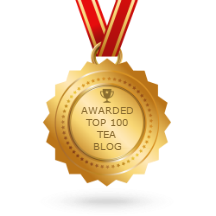Fifth in this round of that practical approach to reading tea leaves. Before steeping, these leaves tell of the process they endured once plucked from the tea bush (Camellia Sinensis). After steeping, they reveal their true nature more fully. Flush is important in Darjeelings, unless you are having a blend. There is quite a difference in leaf appearance and in the tea liquid.
Here are tales from a few Darjeeling teas I’ve tried:
Margaret’s Hope Blend — This tea estate has a bit of sadness in its past, being named after the youngest daughter of the owner in its early days. The girl died before her hope of seeing the garden again could be realized. The tea is not sad, though, and seems infused with that girl’s hope and adoration for those verdant tea fields. The leaf pieces turn dark green to coppery after steeping and impart their muscatel flavor to the liquid.
Arya Ruby 1st Flush — This is truly a tea that has been given the “royal treatment” from field to cup. The leaf pieces are good sized, yet irregular (some big, some small), but not due to any disrespectful handling where their importance was not recognized. They retain their good views of life and stretch out proudly during steeping, exuding an aroma both sweet, fruity, earthy, and hay-like.
Giddapahar China Delight 1st Flush — True to their heritage (Darjeeling teas are grown from the Chinese tea bush varietal Camellia Sinensis sinensis), and yet full of the mountain mists and rains of the Himalayas, these tea leaves have an appearance that is pure Darjeeling, ranging from green to copper and broken pieces. That indicates a bit more handling, quite possibly by machine. See how bright green they are after steeping, showing how little, if any, oxidation was allowed.
Risheehat Clonal Flowery 2nd Flush — This tea, grown at lower elevations, ranging from 980 to 2050 meters above sea level, speaks of huddling closer to the heart of the earth and further from the clouds and mountain peaks. Being a 2nd flush tea, the leaves saw the Summer sun and took its rays for their own, storing that energy raging millions of miles away — the pivot point of our solar system — into their cells. The leaf-bud combo shows it was very likely harvested by hand.
Makaibari Darjeeling Blend — These tea leaves are grown at 3,000 to 4,000 feet above sea level, closer to the clouds and the peaks but not so far from the heart of the earth that its beat escapes them. Fairly small leaf pieces show some rather rough handling, or at least that’s the impression. It also means they steep up a bit faster and stronger. This particular Darjeeling was missing that Muscatel quality these teas are known for. They do not sing on the palate as their brethren Darjeelings do.
The tales that tea leaves tell! Next time, we’ll see the tales of Ceylon teas.
In case you missed ’em:
Reading Tea Leaves — Green Teas
Reading Tea Leaves — Oolong Teas
Reading Tea Leaves — White Teas
Reading Tea Leaves — Black Teas
© Online Stores, Inc., and The English Tea Store Blog, 2009-2014. Unauthorized use and/or duplication of this material without express and written permission from this article’s author and/or the blog’s owner is strictly prohibited. Excerpts and links may be used, provided that full and clear credit is given to Online Stores, Inc., and The English Tea Store Blog with appropriate and specific direction to the original content.








Leave a comment